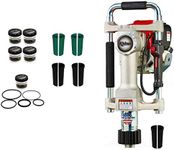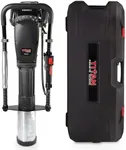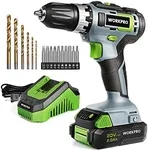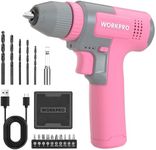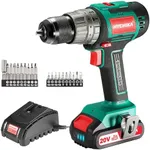Buying Guide for the Best Post Drivers
Choosing the right post driver can make your fencing or construction project much easier and more efficient. A post driver is a tool used to drive fence posts, signposts, or other types of posts into the ground. When selecting a post driver, it's important to consider several key specifications to ensure you get the best fit for your needs. Understanding these specifications will help you make an informed decision and choose a post driver that will perform well for your specific tasks.Power SourceThe power source of a post driver determines how it operates. There are manual, gas-powered, and hydraulic post drivers. Manual post drivers are simple and require physical effort, making them suitable for small projects or occasional use. Gas-powered post drivers are more powerful and can handle larger projects with ease, making them ideal for medium to large-scale tasks. Hydraulic post drivers are the most powerful and are used for heavy-duty applications, such as commercial or industrial projects. Choose a power source based on the scale and frequency of your work.
WeightThe weight of a post driver affects its portability and ease of use. Lighter post drivers are easier to handle and transport, making them suitable for smaller projects or when you need to move around frequently. Heavier post drivers, while more challenging to maneuver, often provide more driving force and stability, making them better for larger or more demanding tasks. Consider your physical strength and the nature of your project when selecting the weight of your post driver.
Impact ForceImpact force is the amount of force the post driver applies to drive the post into the ground. It is usually measured in joules or foot-pounds. Higher impact force means the post driver can drive posts more quickly and efficiently, especially in tough or rocky soil. For light-duty tasks, a lower impact force may be sufficient, while for heavy-duty or commercial projects, a higher impact force is necessary. Assess the type of soil and the size of the posts you will be driving to determine the appropriate impact force.
Post Size CompatibilityPost size compatibility refers to the range of post diameters that the post driver can accommodate. Some post drivers are designed to handle a specific range of post sizes, while others come with adjustable settings or interchangeable sleeves to fit different diameters. Ensure that the post driver you choose can handle the size of the posts you plan to use. If you work with various post sizes, look for a versatile post driver with adjustable features.
Ease of UseEase of use encompasses several factors, including the design, ergonomics, and additional features of the post driver. Look for a post driver with comfortable handles, a balanced design, and user-friendly controls. Features like vibration reduction, quick-start mechanisms, and easy maintenance can also enhance usability. Consider how often you will use the post driver and how important comfort and convenience are to you when making your choice.
DurabilityDurability is crucial for ensuring that your post driver can withstand regular use and harsh conditions. Look for post drivers made from high-quality materials, such as steel or reinforced composites, and check for features like rust resistance and sturdy construction. A durable post driver will last longer and provide reliable performance, making it a worthwhile investment. Consider the environment and frequency of use to determine the level of durability you need.






